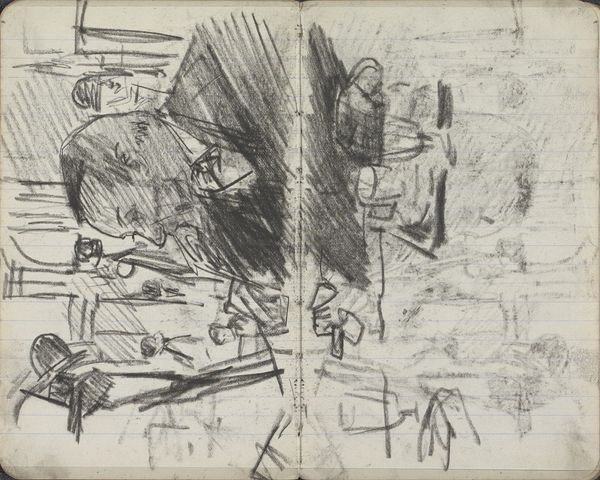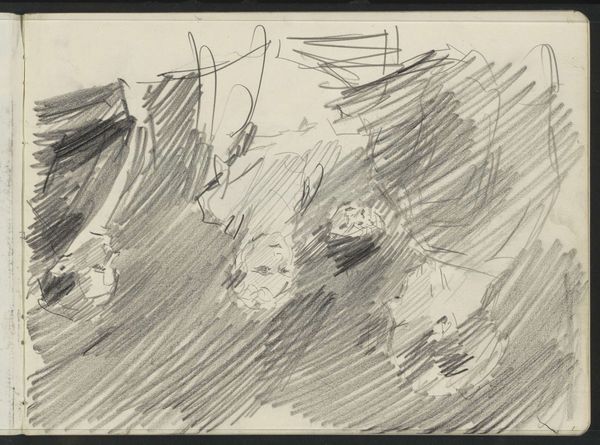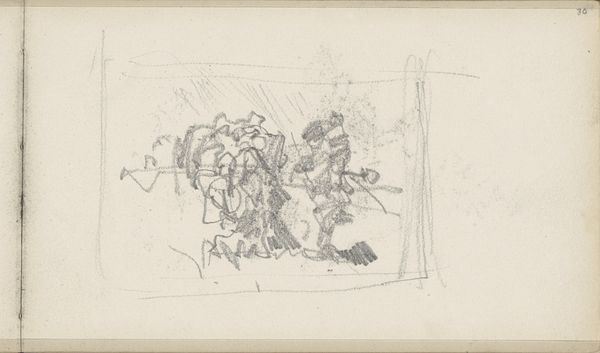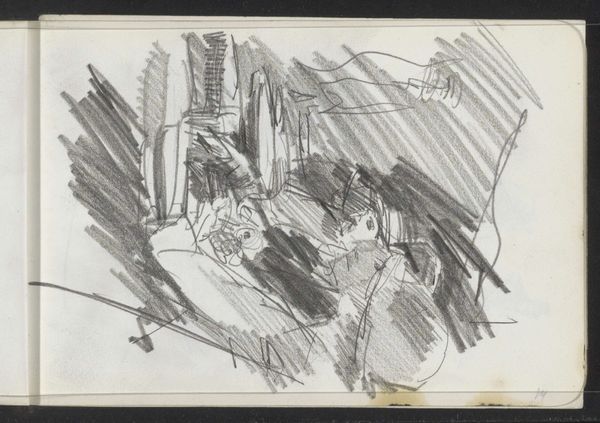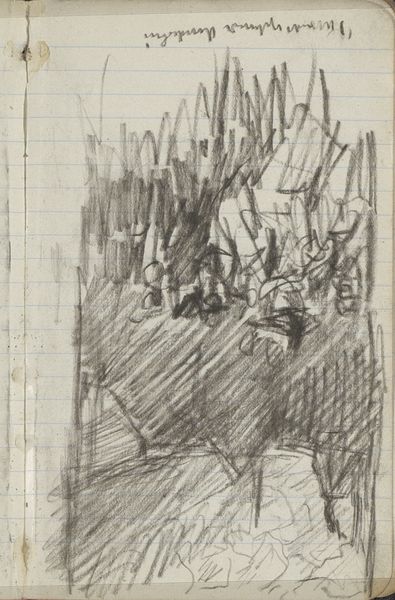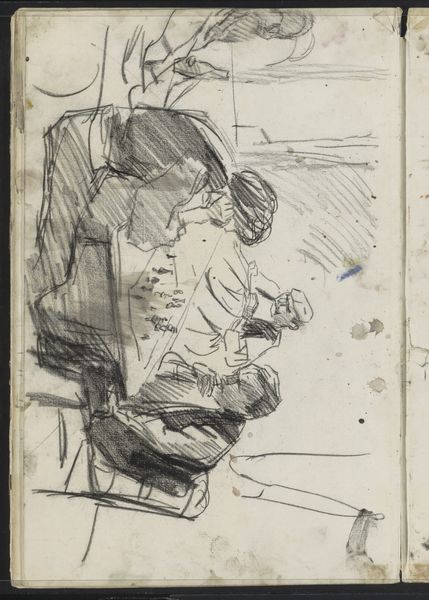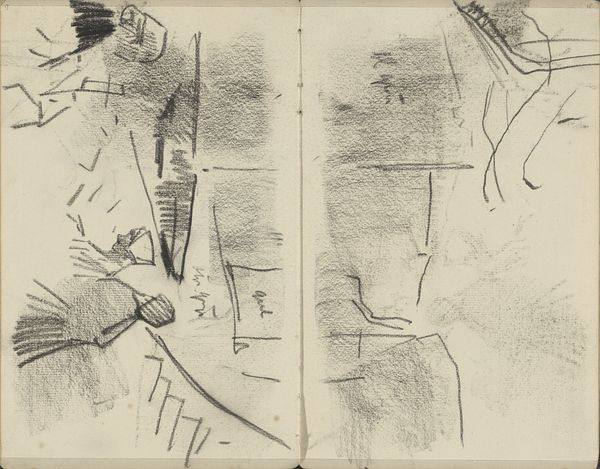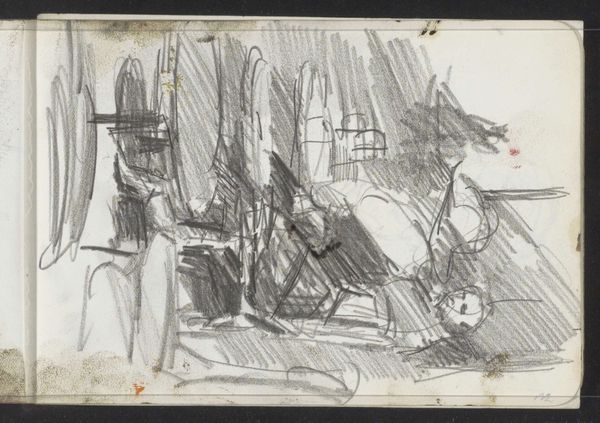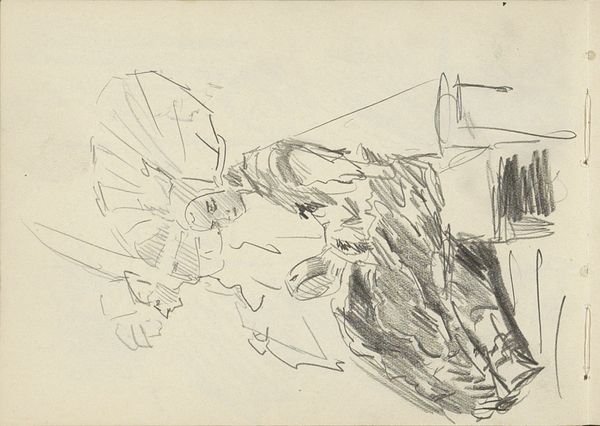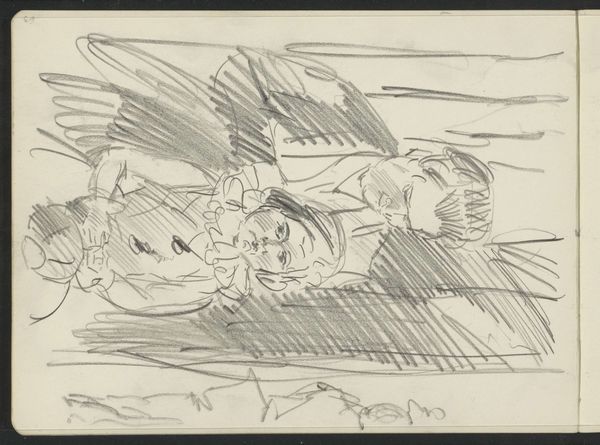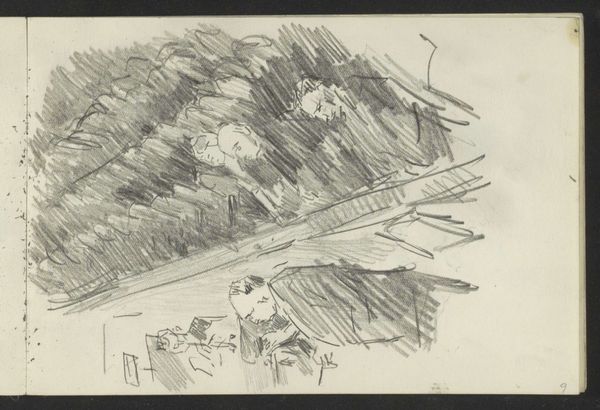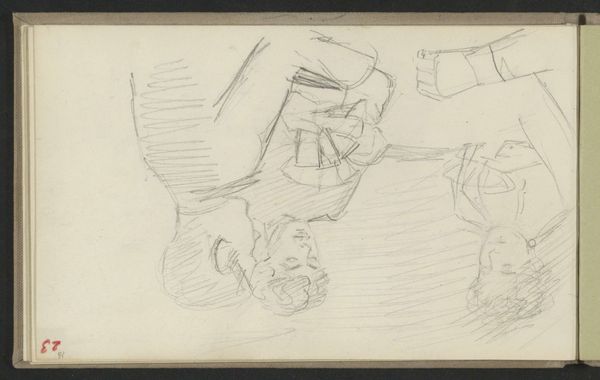
drawing, graphite
#
drawing
#
landscape
#
graphite
Copyright: Rijks Museum: Open Domain
Curator: Welcome to the Rijksmuseum. Here, we're looking at Willem Bastiaan Tholen's graphite drawing, "Landschap met bomen," which translates to "Landscape with Trees," and it was made sometime between 1870 and 1931. Editor: It’s…rough, isn't it? Almost aggressively sketchy. The shapes are barely defined. There's an unfinished quality to the marks, especially the diagonal strokes suggesting perhaps a meadow? It really emphasizes the raw materiality of the graphite on paper. Curator: Absolutely, and that roughness, as you say, I think invites a crucial reading related to environmental consciousness of the time. Consider the rise of industrialization during Tholen’s working life and how that development forever transformed the landscape. Editor: Right, but if you remove that layer, what's actually here in terms of process and medium? Graphite is inherently tied to mass production now. Before pencils, people used silverpoint or charcoal, laborious processes involving precise gestures. The availability of graphite represents a kind of democratization of art-making. Curator: And so, does Tholen use that mass production to critique power or conform to it? I'd argue there's an inherent unease here. Look at how the trees are drawn; almost frantic lines and how the diagonal slashes could signify the relentless encroachment of modern methods that would change the terrain forever. Editor: Interesting perspective! Though I am looking more at his gestural marks, he is grappling with the very directness graphite offers to render the quickly changing physical world in front of him. I imagine he sat right down to sketch that, the graphite marks reflecting not only his subject but its temporality, too. Curator: The gendered aspect of landscapes and who are given the time, permission, freedom to participate, adds layers of meaning as well, that can’t be dismissed! Editor: And that reminds me that the ease and immediacy that is suggested belies the true work, both physical and intellectual. Perhaps more labor intensive than appears. Curator: I think looking at art is more interesting when we keep in mind the complexity and multifaceted layers of the artist! Editor: Indeed! Thanks for expanding my interpretation of this work!
Comments
No comments
Be the first to comment and join the conversation on the ultimate creative platform.
